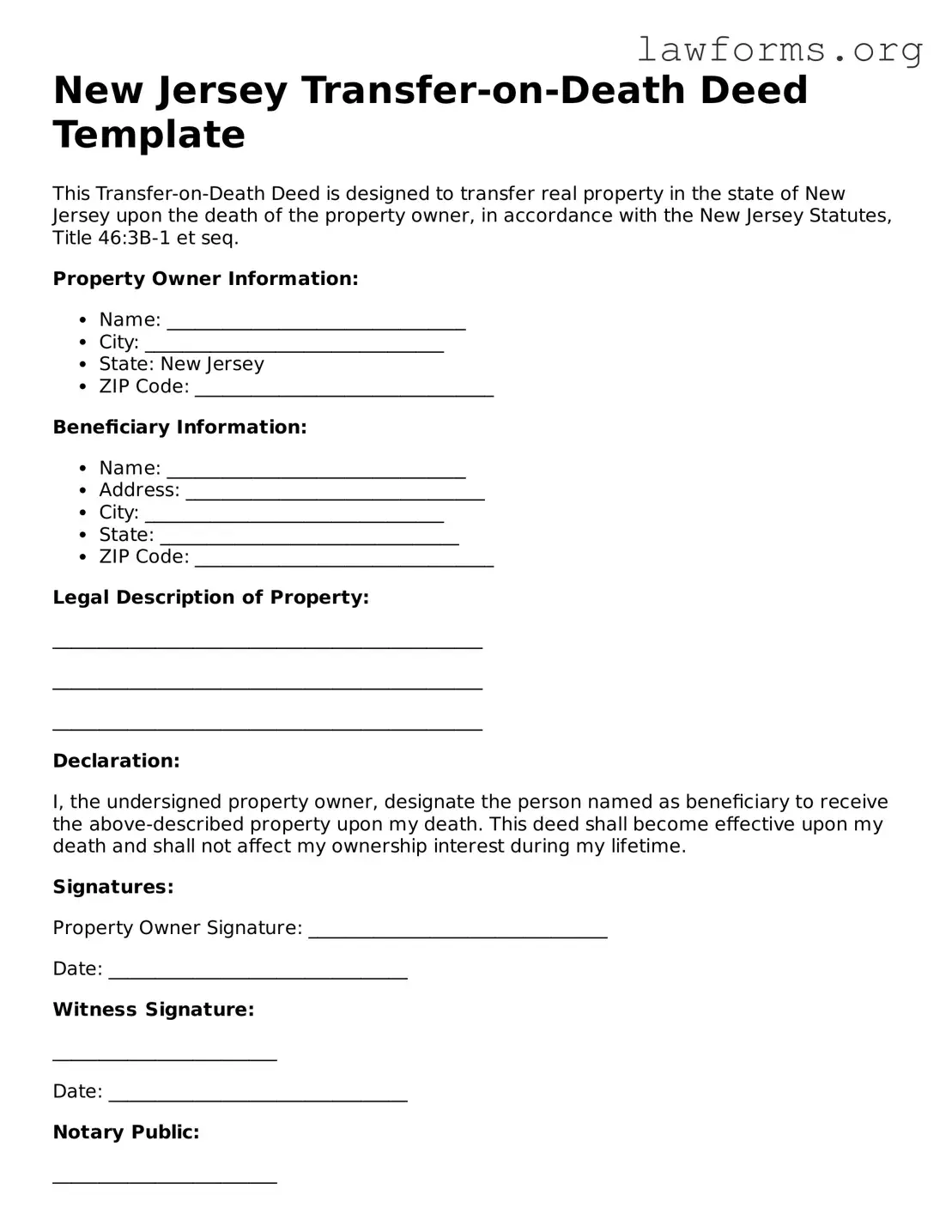New Jersey Transfer-on-Death Deed Template
This Transfer-on-Death Deed is designed to transfer real property in the state of New Jersey upon the death of the property owner, in accordance with the New Jersey Statutes, Title 46:3B-1 et seq.
Property Owner Information:
- Name: ________________________________
- City: ________________________________
- State: New Jersey
- ZIP Code: ________________________________
Beneficiary Information:
- Name: ________________________________
- Address: ________________________________
- City: ________________________________
- State: ________________________________
- ZIP Code: ________________________________
Legal Description of Property:
______________________________________________
______________________________________________
______________________________________________
Declaration:
I, the undersigned property owner, designate the person named as beneficiary to receive the above-described property upon my death. This deed shall become effective upon my death and shall not affect my ownership interest during my lifetime.
Signatures:
Property Owner Signature: ________________________________
Date: ________________________________
Witness Signature:
________________________
Date: ________________________________
Notary Public:
________________________
Date: ________________________________
My Commission Expires: ________________________________
Ensure this deed is filed with the appropriate county clerk’s office in New Jersey to fulfill all legal requirements for the transfer to be valid.
